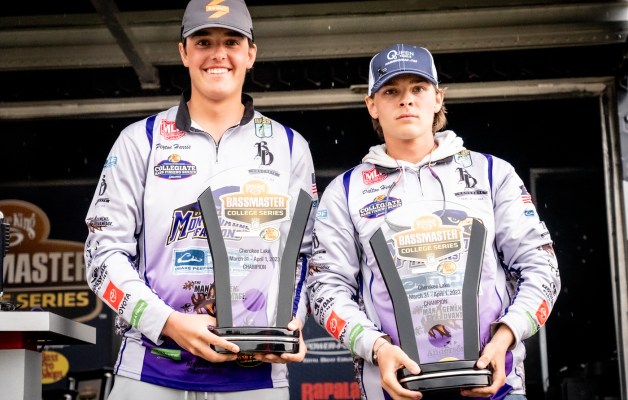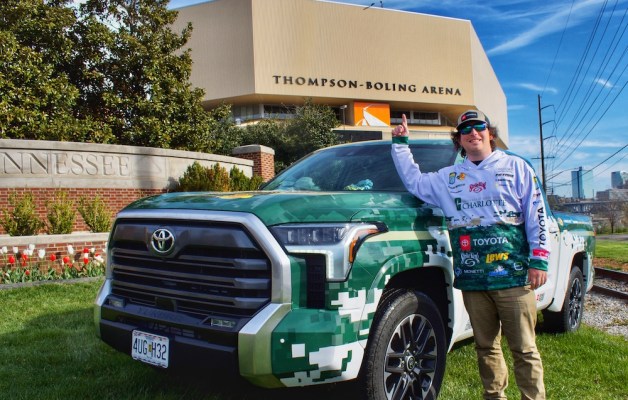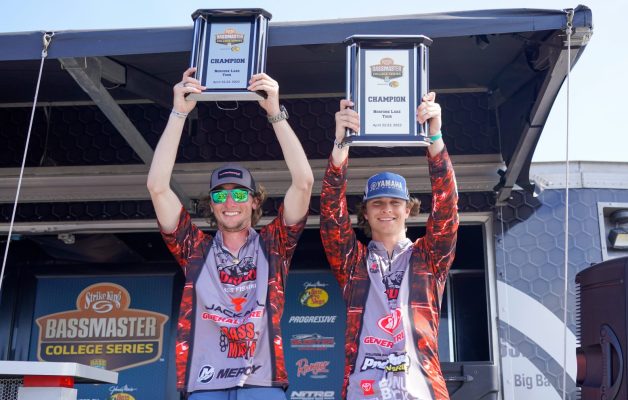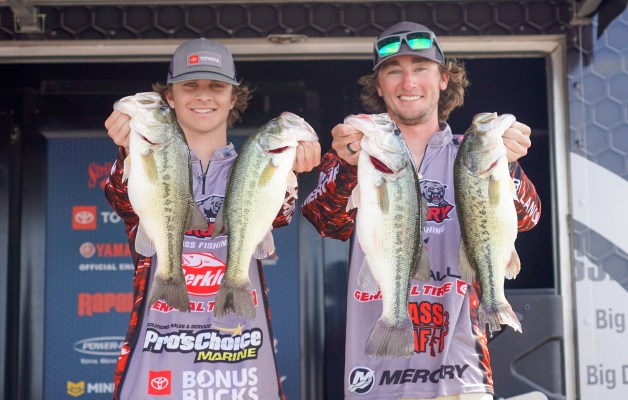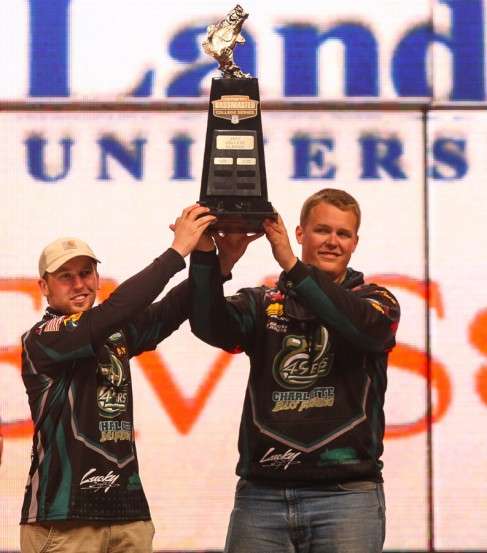
GREENVILLE, S.C. — Andrew Helms and Jake Whitaker, students at the University of North Carolina-Charlotte, made collegiate bass fishing history today by scoring a 2015 Carhartt Bassmaster College Classic title to add to their National Championship title.
The anglers from Charlotte brought five bass to the scales weighing 9 pounds, 6 ounces to win the College Classic title. UNC-Charlotte had a winning margin of just 4 ounces over runner-up Clemson University. The limit caught by Dean Legg and Spencer Waldrop weighed 9-2.
Just 1 ounce behind was Hampton Anderson and Josh Rennebaum of the University of South Carolina. Taking fourth place was Lander University’s Ben Stone and Collin Smith with 8-6.
“To win this twice is just incredible,” said civil engineering major Whitaker, 22, referring to their other win in the Carhartt Bassmaster College Series National Championship .
“There’s no way that we’d gain the experience and skills we have now without the college B.A.S.S. program,” added Helms, 20, a marketing major.
The competition between eight colleges was held on Lake Keowee, an 18,500-acre impoundment not far from Lake Hartwell, site of the GEICO Bassmaster Classic presented by GoPro.
The teams weighed their catches on the very same stage where bass fishing’s world championship winner was determined Sunday.
Helms and Whitaker are no strangers to Keowee. Whitaker fished the lake last month in a regional tournament and both anglers spent considerable practice time there.
For the win, UNC-Charlotte relied on two primary baits — the Megabass Vision 110 jerkbait and a shaky head.
Targeting high-profile structure was a key for applying the lures during a limited time available to the anglers. The winning team’s first stop was a submerged bridge in 18 feet of water. A bonus was the presence of baitfish and thus, the reason for using the jerkbait. The anglers triggered reaction strikes by working the lure across through the baitfish staged near the bridge.
After catching one quality bass from the rubble, the team moved into a creek channel to target submerged brushpiles between 25 and 35 feet of water.
“Having deeper water nearby was key to the bite with the shaky head,” Whitaker said. “The contour break near the brush really made a difference for us.”
Filling the limit required working the lure slowly through the isolated brushpiles. The technique produced the four bass needed to fill the limit.
Helms and Whitaker received an automatic invitation to return and defend their title at the 2016 Classic, site and date to be determined.


